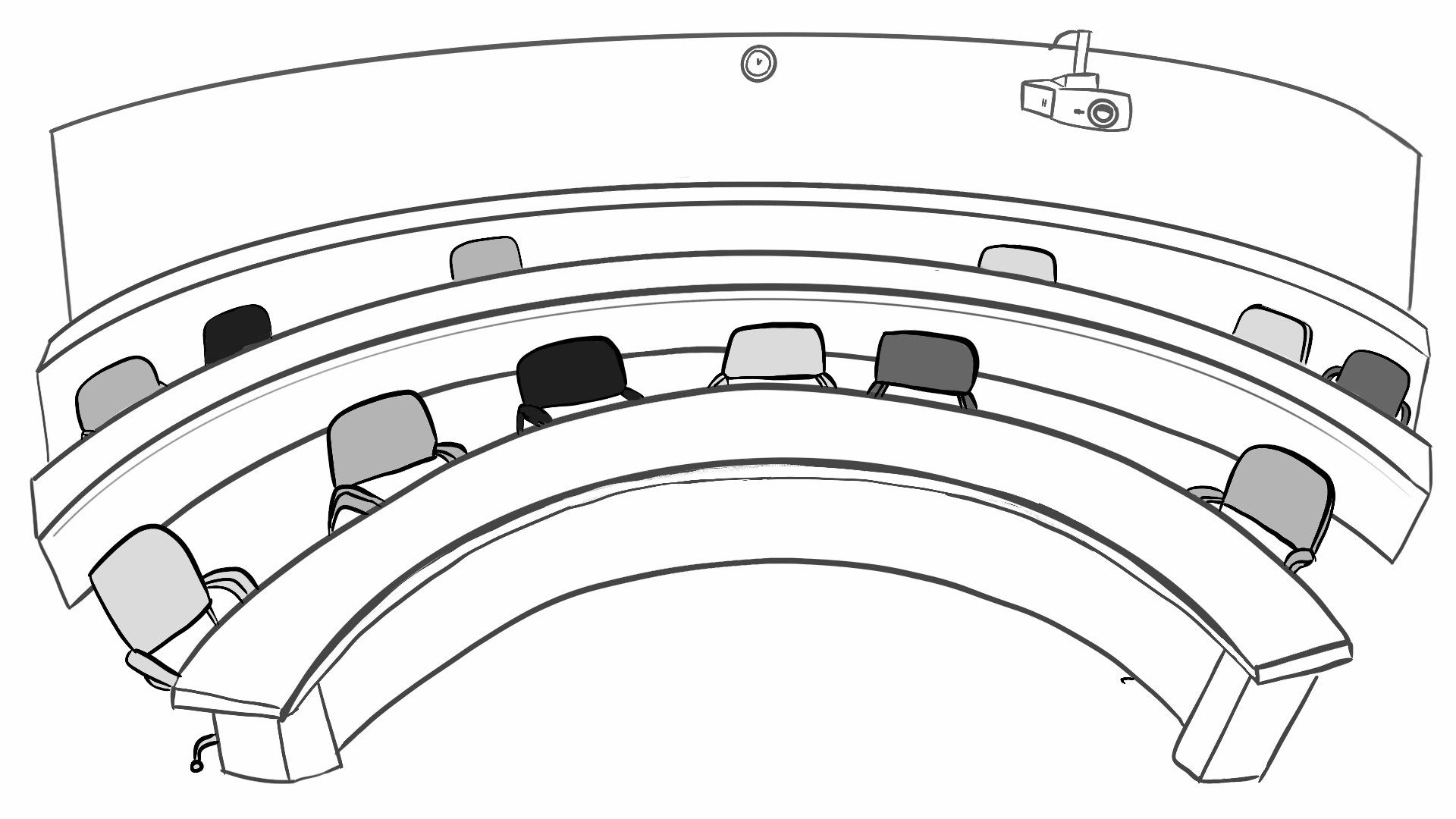
What if there was a drug that extended life, made you happier, healthier, and wealthier, and strengthened your relationships? The good news: It exists. The bad news: It’s being needlessly hoarded.
This drug is higher education. America is the world’s premier source, producing the compound at a purity no other manufacturer can rival. Harvard, for example, quadruples the patient’s income. It also dramatically increases their odds of becoming president. Millions come to the U.S. to access this drug. In a rational world, we’d be making as much of it as possible. Instead, we sequester it behind ivy-covered walls and sky-high tuitions. And for centuries, we prescribed it almost exclusively to white people.
15
In 1960 the Black student population across Harvard, Yale, and Princeton was 15. That’s 15 people, not 15%. In 1965, President Johnson made the case for doing something about it: “You do not take a person who, for years, has been hobbled by chains and liberate him, bring him up to the starting line of a race, and then say, ‘You are free to compete with all the others.’” Subsequently, affirmative action has helped reallocate elite higher education more equitably: Between 1980 and 2020, the non-white Ivy League student population went from 14% to 50%.
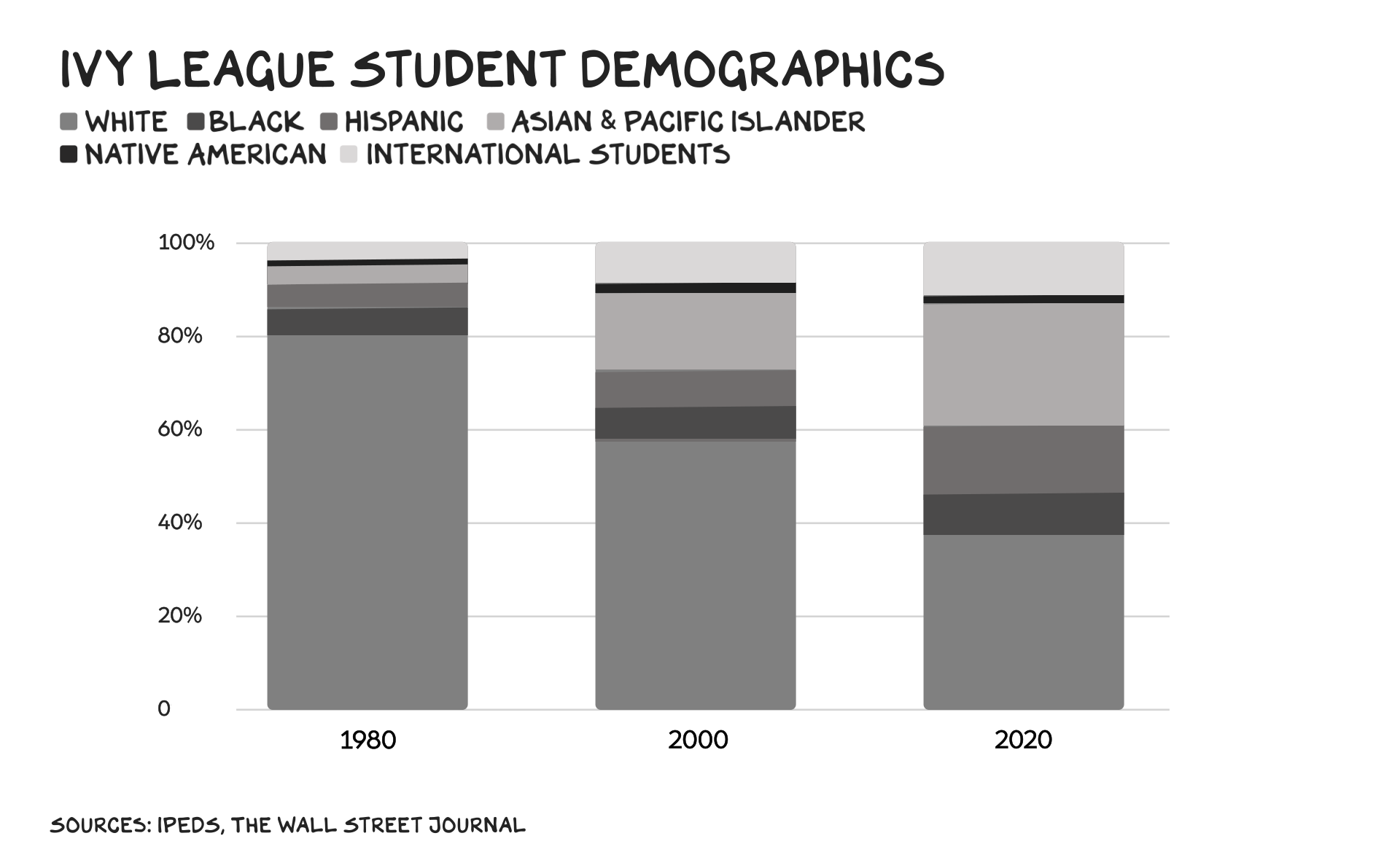
Affirmative action has been controversial, and disputes about race-conscious admissions regularly reach the U.S. Supreme Court. This week the Court dismantled affirmative action, determining it unconstitutional to consider race in university admissions.
I believe this is the right answer (but the wrong question … more on that in a moment). I’m not alone in this view. Affirmative action is broadly unpopular. In the U.S., 74% of people don’t believe race should be used as even a minor deciding factor in college admissions. California ended affirmative action at public universities in 1996, and in 2020 voters rejected a measure to reinstate it by 14 percentage points. The benefits of race-based affirmative action have expired. (See above: The changed racial makeup at Ivy League schools.) To be clear, race is still a powerful force in American society, but it lags a more sweeping agent: money.
$$$
Students from the top family-income bracket score higher on standardized tests and are far more likely to go to college. At Harvard, 71% of Black, Latino, and Native American students come from college-educated homes with family incomes above the national median. Reshuffling elites, by race, is still elitism.
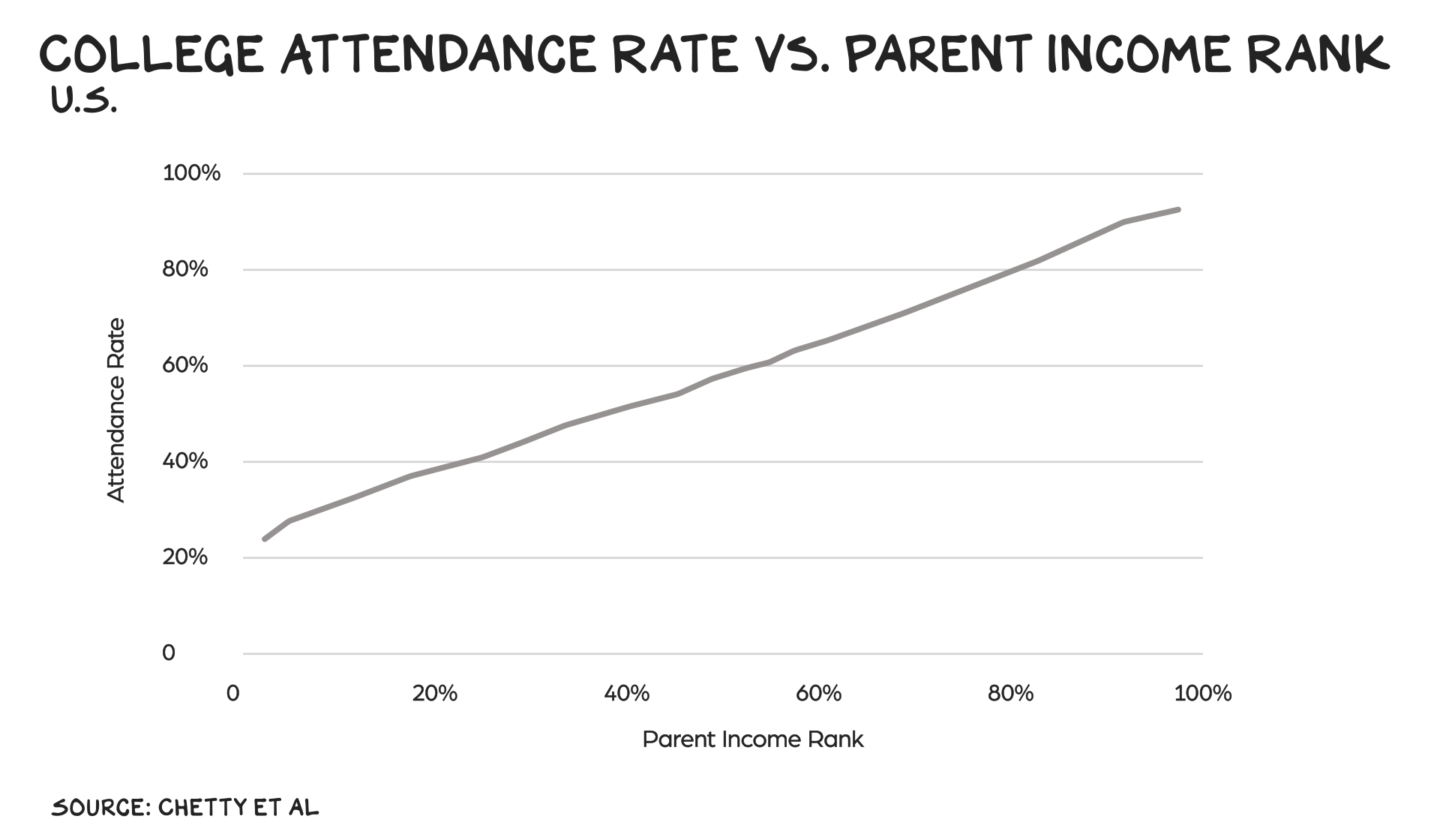
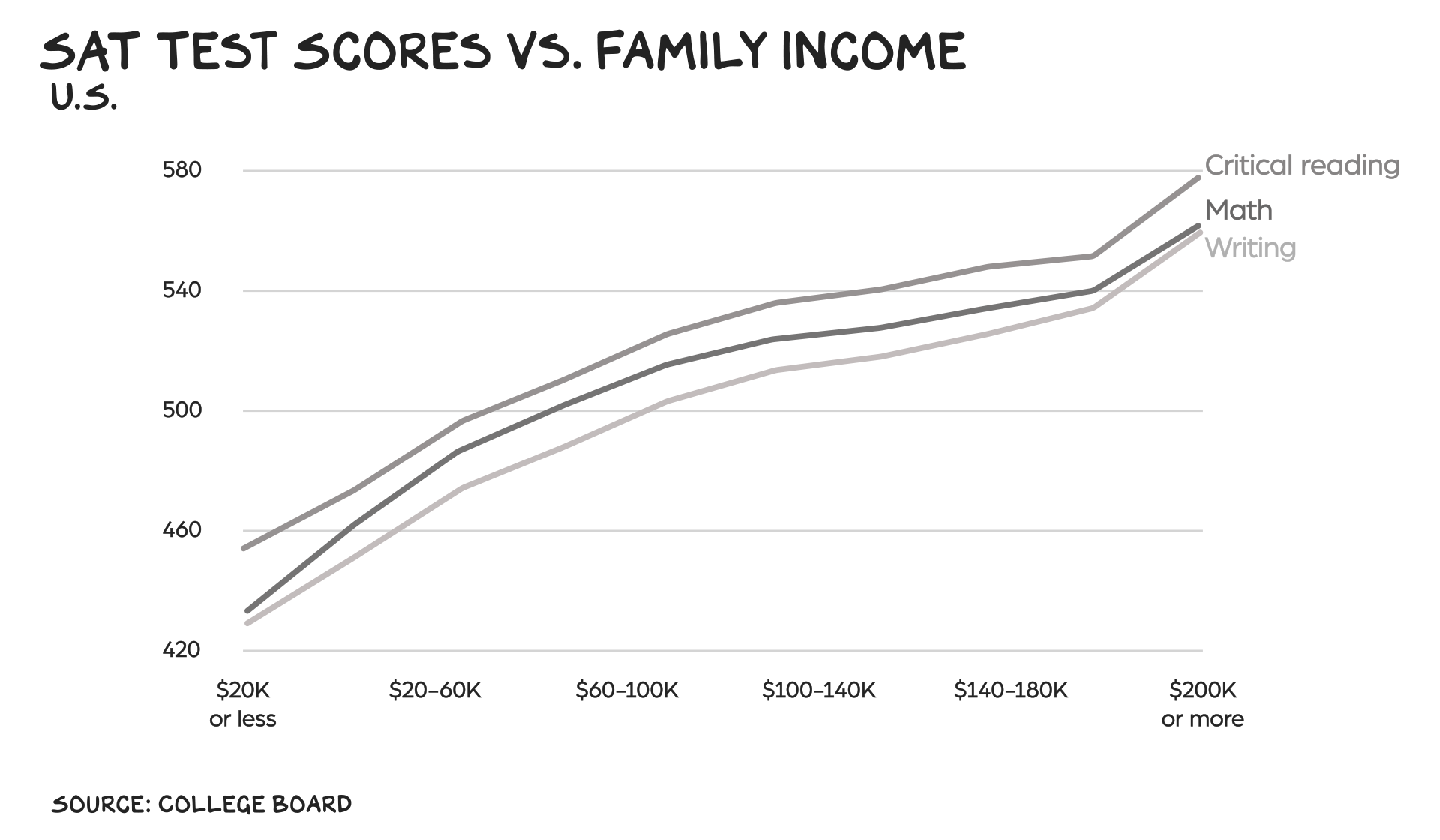
In a capitalist society, money is increasingly the ultimate determinant of everything. Beyond your college performance, the amount your parents make improves most other outcomes, from teenage birth rates to life expectancy. While it’s true a poor Black kid is disproportionately affected by poverty more than a poor white kid, the more meaningful macro-indicator of their success isn’t race — it’s that they’re poor. Family income isn’t a proxy for inequality, it is inequality. Americans support class-based preferences by 2 to 1. And they work: without looking at race, my alma maters, UCLA and Berkeley, consistently admit the highest percentage of students receiving federal Pell grants. In 2021 the UC system admitted its most racially diverse class ever.
The Court’s ruling has inspired an overdue conversation re legacy admissions. They’re a double-edged sword. It’s wrong that the unimpressive kids of shopping mall developers gain easier admission to the best colleges. Admissions directors know this. But money is the neosporin for their souls — happy alumni are generous alumni and could (in theory) provide the resources to help disadvantaged kids. But that justification is inconsistent with the rising cost and elitism of higher education.
In the past five decades, the price of college has risen 1,600%. Meanwhile, increasingly commonplace sub-10% acceptance rates are viewed as a feature not a bug. Some nuance here: This tuition increase is not evenly distributed, because the richest schools have torrents of money for scholarships. But their artificial limits on supply arbitrage good kids from middle-class families down the cartel chain to schools that charge the same price but don’t offer the same financial aid … or the same certification and experience. A kid from a top-0.1%-income-earning household is 80 times more likely to get into an elite college than a kid from the bottom fifth. College sweatshirts would be more honest if they printed “Caste” above the logo.
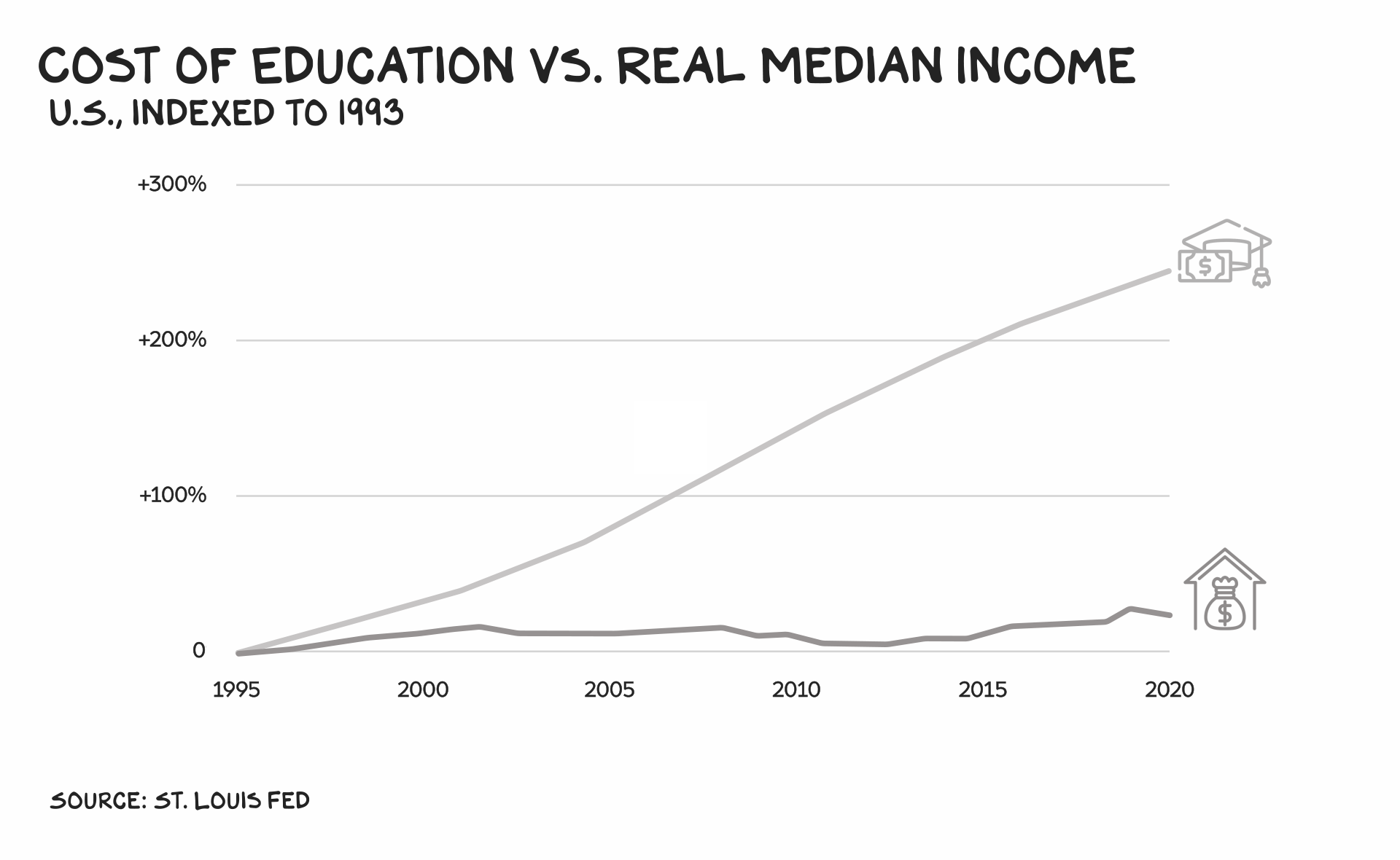
Misdirection
The discussion around affirmative action and the emotion it evokes distract from the real issue and culprits. The question facing American higher education is not “Who?” It’s “How Many?” The answer should be … “More.” Specifically, lower cost, increased volume. More kids of color, more middle- and lower-income kids, more trans kids, more men, more women, more legacies, and more international students who pay full freight and become evangelists for the U.S. when they return to their native countries … or stay to run a Nasdaq company. We need to stop finding reasons to divide us and focus on solutions that enrich us. Hoarding a lifesaving drug like this would cause chaos and anger. And it has. Ask any parent of a senior applying to college.
Grand Bargain
The Supreme Court has, accidentally, illuminated a path forward. Striking down Biden’s debt-relief program freed up $500 billion earmarked for higher education. Something with a $500 billion price tag should be for an investment in the future of the country, not a populist bailout. The student debt relief package was an effort to shrink the tumor, but it did nothing to treat the underlying cancer — cost and access. It’s telling that the affirmative action debate is irrelevant to most colleges and college applicants, as they do not have demand that far outstrips supply. That’s the answer, supply.
Here’s my proposal. The federal government should offer the largest 500 public universities (approximately the top third) an average of $1 billion per school (adjusted by size), in exchange for the following commitments. Over the next 10 years:
- Reduce tuition by 2% a year;
- Expand enrollments 6% a year via investments in technology and infrastructure; and
- Increase vocational/certificate programs to 20% of students.
The net result, in 10 years, would be double the freshman seats at half the cost (accounting for inflation) and a step-change in opportunity for kids who do not have the money, skills, or desire to pursue a traditional four-year degree. Nearly 50% of Germans have some sort of vocational certification; in the U.S. it’s 5%. Pro tip: Neither you nor your kid have failed if they don’t get a four-year liberal arts degree.
Note: Spare me the bullshit about an erosion in brand equity if our best universities broaden admissions standards. When I attended UCLA it had a 76% admissions rate, and the brand was outstanding. Scarcity is for luxury brands, not education. Rejectionist Nimbyism is a means of transferring of wealth from young/poor to old/rich: skyrocketing value in existing degrees and houses while the cost for young people to attain their dreams has — in lock step — also skyrocketed.
If we can scale companies 40% per year, then we can expand enrollments at our great public universities 6% per year. The system is ready. Remote learning and utilizing campuses during non-peak periods (summer, nights, weekends) could double capacity. Stop building luxury dorms and lazy rivers. Abandon our obsession with four-year liberal arts degrees — we can continue to produce poets and philosophers, but also plumbers and cybersecurity technicians.
Private
Most elite schools, however, are “private” though, right? Sort of. Even more than most “private” enterprises in the U.S., universities are profoundly entangled with the public purse (why the Supreme Court can tell Harvard how to run admissions). They are non-profits and don’t pay taxes on their endowment income, they are the recipients of billions in government grants, and their students pay tuition with federally subsidized student loans and financial aid. Accordingly, we should revoke the non-profit status of any university that enjoys a $1B+ endowment but isn’t expanding its freshman class size at the same, or greater, rate than population growth. If an organization is growing its endowment (i.e., revenues) but not their service to the commonwealth, there’s a term for that: for-profit.
Debt
Student loan debt is a problem, but it’s not the generation-wide disaster the left claims it is. Most student loan holders have manageable debt (the average payment is about $500 per month, or less than 10% of the median starting salary for a college graduate) which they pay off. That’s how loans work. But we should expand our existing loan forgiveness programs for those who take public service jobs or were affirmatively misled. And we should put schools on the hook for the bad debt they create. If a college’s graduate defaults on their student loans, the college should own 25% of the loss. This would force colleges to either improve the ROI of an education that foots the real economy or stop loaning $200k to kids they know will struggle to pay it back — they have this data. A student loan bailout enables universities to continue growing the tumor with increased prices: yes, it helps young adults who’ve seen their wealth cut in half (real benefit), but it also bails out universities who will not alter their predatory lending practices — meaning this generation will ultimately have to pay for another bailout.
Springboard vs. Filter
UCLA and UC Berkeley were transformative for me. I’ve given approximately $18 million to the University of California, and I still owe them. But when I applied, UCLA’s acceptance rate was 76%. (And I had to apply twice.) Today, it’s 9%. The secret to my success was being born before me and my colleagues in academia mutated from public servants to luxury brands.
The media-fueled fight over affirmative action is the latest grist for the mill of a growing, insidious American pastime: hating each other. The answer isn’t which people, but more people. The right has lost the American script, which is investing in youth whose best days are ahead of them — and the left wants to be wokesters vs. warriors attacking the real enemy. We’re missing the forest for the anger. The answer is more.
Life is so rich,
![]()
P.S. The Prof G Pod is now on YouTube. Check it out here.
P.P..S. Join me and AI expert Gary Marcus on July 25 for a free event on the threats and opportunities of AI. Grab your seat here, and come with questions.
Top image by Nino Souza Nino from Pixabay



